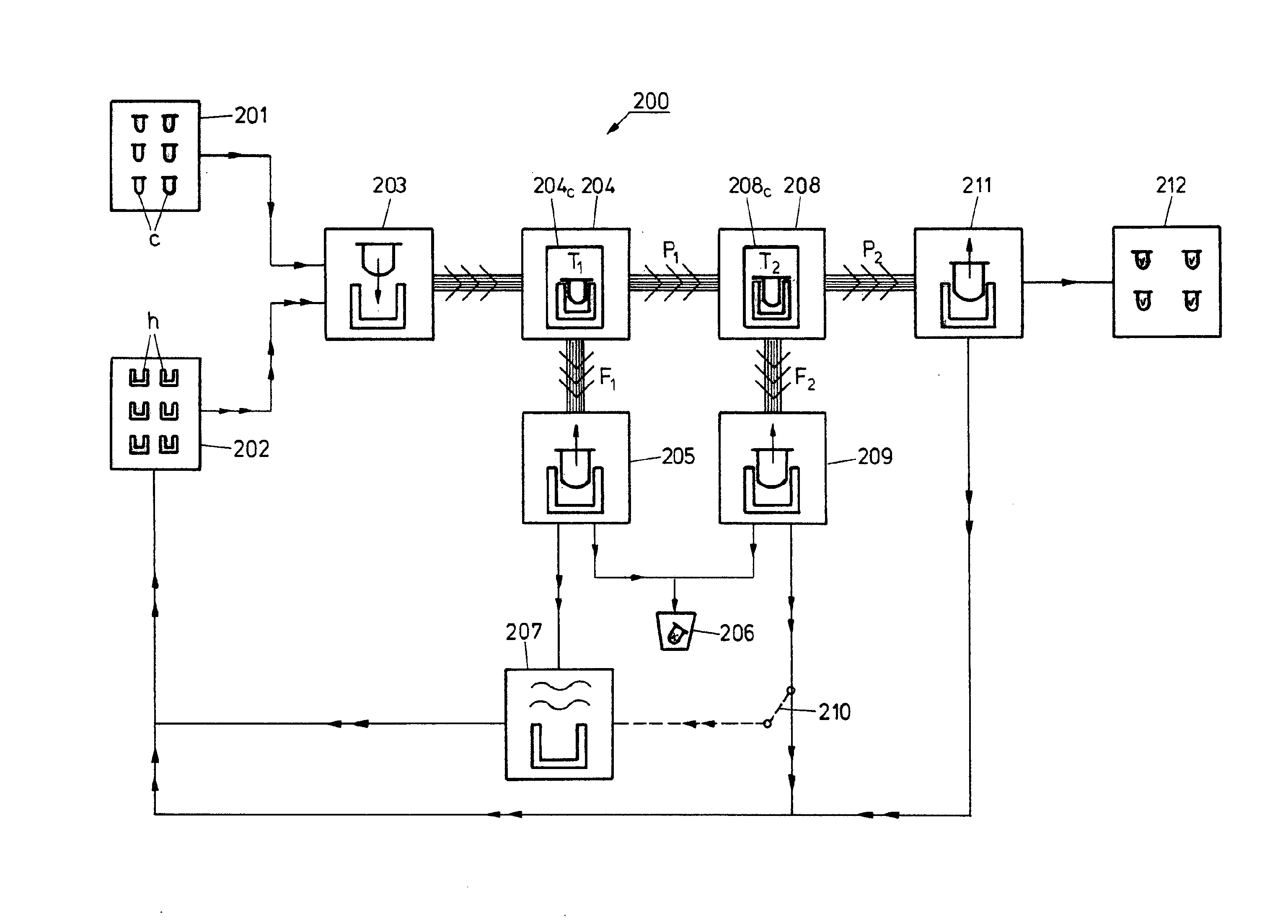Multistage container leak testing
- Summary
- Abstract
- Description
- Claims
- Application Information
AI Technical Summary
Benefits of technology
Problems solved by technology
Method used
Image
Examples
Embodiment Construction
[0036]Container holders are known in the industry as “pucks”. They may either simply be holders for containers to be tested by a leak testing arrangement, or they may furthermore also form part of a test chamber for such a leak testing arrangement. In the former case, the container holder will be received completely inside a test chamber, whereas in the latter case the container holder itself forms part of the test chamber, a further test chamber section being brought into sealed contact with the container holder such that the test chamber is formed by the container holder and the further test chamber section.
[0037]FIGS. 1a-1c provide several illustrations of shapes of container holders in cross-section and plan view. In FIG. 1a, container holder 101 illustrates a simple form of container holder, and comprises a container holder body 101b provided with an opening 101o for receiving a container (not illustrated). The container holder body 101b may be cylindrical or any other convenie...
PUM
 Login to View More
Login to View More Abstract
Description
Claims
Application Information
 Login to View More
Login to View More - R&D
- Intellectual Property
- Life Sciences
- Materials
- Tech Scout
- Unparalleled Data Quality
- Higher Quality Content
- 60% Fewer Hallucinations
Browse by: Latest US Patents, China's latest patents, Technical Efficacy Thesaurus, Application Domain, Technology Topic, Popular Technical Reports.
© 2025 PatSnap. All rights reserved.Legal|Privacy policy|Modern Slavery Act Transparency Statement|Sitemap|About US| Contact US: help@patsnap.com



